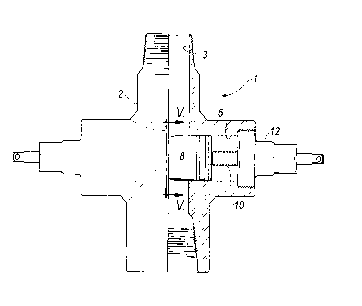Some of the information on this Web page has been provided by external sources. The Government of Canada is not responsible for the accuracy, reliability or currency of the information supplied by external sources. Users wishing to rely upon this information should consult directly with the source of the information. Content provided by external sources is not subject to official languages, privacy and accessibility requirements.
Any discrepancies in the text and image of the Claims and Abstract are due to differing posting times. Text of the Claims and Abstract are posted:
| (12) Patent: | (11) CA 2177629 |
|---|---|
| (54) English Title: | WELLHEAD PRODUCTION BLOWOUT PREVENTER RAM |
| (54) French Title: | OBTURATEUR A MACHOIRES POUR TETE DE PUITS |
| Status: | Term Expired - Post Grant Beyond Limit |
| (51) International Patent Classification (IPC): |
|
|---|---|
| (72) Inventors : |
|
| (73) Owners : |
|
| (71) Applicants : | |
| (74) Agent: | |
| (74) Associate agent: | |
| (45) Issued: | 1999-09-21 |
| (22) Filed Date: | 1996-05-29 |
| (41) Open to Public Inspection: | 1997-11-30 |
| Examination requested: | 1996-05-29 |
| Availability of licence: | N/A |
| Dedicated to the Public: | N/A |
| (25) Language of filing: | English |
| Patent Cooperation Treaty (PCT): | No |
|---|
| (30) Application Priority Data: | None |
|---|
The rubber layer on the ram is reinforced at the sealing areas by forming
ribs on the ram core. The ribs function to resist extrusion of the rubber layer when the
blowout preventer is subjected to high pressure from the well.
La couche de caoutchouc sur la mâchoire d'obturateur est renforcée aux points de scellement en formant des nervures sur l'âme de la mâchoire d'obturateur. Les nervures permettent à la bande de caoutchouc de résister à l'extrusion lorsque le bloc obturateur de puits est soumis à des pressions élevées dans le puits.
Note: Claims are shown in the official language in which they were submitted.
Note: Descriptions are shown in the official language in which they were submitted.

2024-08-01:As part of the Next Generation Patents (NGP) transition, the Canadian Patents Database (CPD) now contains a more detailed Event History, which replicates the Event Log of our new back-office solution.
Please note that "Inactive:" events refers to events no longer in use in our new back-office solution.
For a clearer understanding of the status of the application/patent presented on this page, the site Disclaimer , as well as the definitions for Patent , Event History , Maintenance Fee and Payment History should be consulted.
| Description | Date |
|---|---|
| Revocation of Agent Requirements Determined Compliant | 2020-09-01 |
| Inactive: Expired (new Act pat) | 2016-05-29 |
| Maintenance Request Received | 2013-05-22 |
| Inactive: Office letter | 2007-03-14 |
| Inactive: Corrective payment - s.78.6 Act | 2007-01-17 |
| Request for Examination Received | 2000-04-06 |
| Inactive: Correspondence - Formalities | 2000-04-06 |
| Grant by Issuance | 1999-09-21 |
| Inactive: Cover page published | 1999-09-20 |
| Pre-grant | 1999-06-10 |
| Inactive: Final fee received | 1999-06-10 |
| Notice of Allowance is Issued | 1999-03-19 |
| Letter Sent | 1999-03-19 |
| Notice of Allowance is Issued | 1999-03-19 |
| Inactive: Status info is complete as of Log entry date | 1999-03-15 |
| Inactive: Application prosecuted on TS as of Log entry date | 1999-03-15 |
| Inactive: Approved for allowance (AFA) | 1999-02-15 |
| Application Published (Open to Public Inspection) | 1997-11-30 |
| Request for Examination Requirements Determined Compliant | 1996-05-29 |
| All Requirements for Examination Determined Compliant | 1996-05-29 |
There is no abandonment history.
The last payment was received on 1999-05-25
Note : If the full payment has not been received on or before the date indicated, a further fee may be required which may be one of the following
Please refer to the CIPO Patent Fees web page to see all current fee amounts.
Note: Records showing the ownership history in alphabetical order.
| Current Owners on Record |
|---|
| STREAM-FLO INDUSTRIES LTD. |
| Past Owners on Record |
|---|
| KEITH D. FARQUHARSON |
| TONY M. LAM |